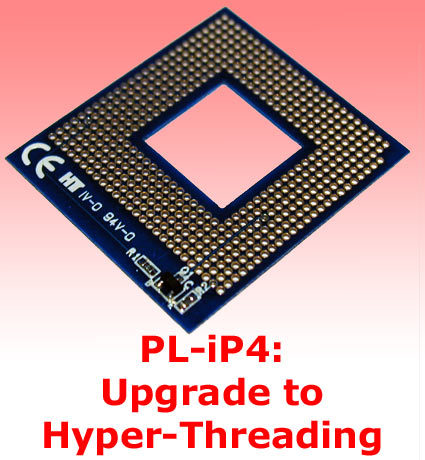Upgrading to Hyper-Threading? The PL-iP4 Adapter from PowerLeap
Upgrading To Hyper-Threading: Review Of A CPU Adapter From PowerLeap
Without a doubt, it is the strongest temptation offered by the Pentium 4: we're talking about Hyper-Threading (HT), Intel's latest attempt to help modern systems achieve better performance. Rather than merely raising the clock speed, this attempt increases the parallelization instead.
With the appropriate support from the BIOS, Windows is capable of responding to a P4 system with HT functionality, just like a dual processor system with the multiprocessor kernel. To do this, Intel revised the Pentium 4 internally in such a way that typical threads (strings of programming instructions within a task) could be executed as close to simultaneously as possible. Initially, the results were measurable, but not noticeable, improvements in performance. More and more applications are being optimized for multiprocessing environments, normally without any disadvantage. But for Pentium 4 and actual multiprocessor systems, there are huge advantages.
Until now, the only catch to Hyper-Threading was the expense of buying a corresponding system. The processor, a Pentium 4 with 3.06 GHz, used to cost several hundred dollars, and usually a new mainboard was needed too. In many cases, older boards could be made HT-capable with a simple BIOS update, but usually there was no way around buying a new one.
PowerLeap now offers an adapter which can help to make many mainboards HT-capable. The prerequisite for it, however, is BIOS support from the manufacturer. In practice, there are a number of boards with chipsets from Intel's 845 line that are supposed to be "upgradeable" in this way.
Get Tom's Hardware's best news and in-depth reviews, straight to your inbox.
Current page: Upgrading To Hyper-Threading: Review Of A CPU Adapter From PowerLeap
Next Page What Does Hyper-Threading Do?
Patrick Schmid was the editor-in-chief for Tom's Hardware from 2005 to 2006. He wrote numerous articles on a wide range of hardware topics, including storage, CPUs, and system builds.
